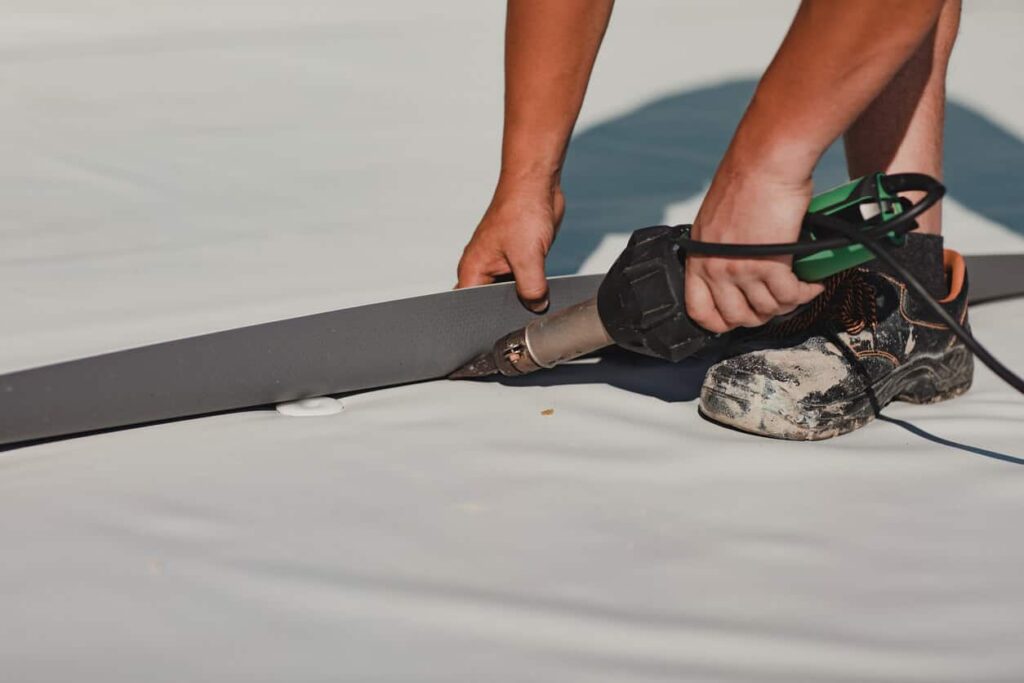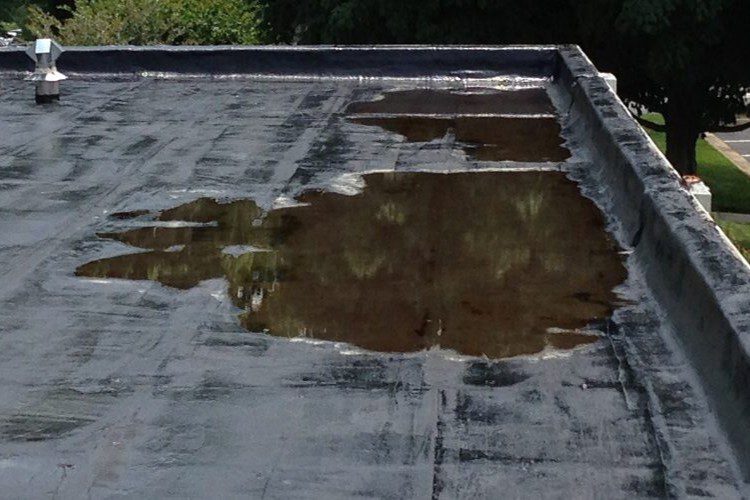We understand the importance of choosing the right roofing system for your commercial or industrial property at Chaffee Roofing. In this blog post, we will dive deep into the world of single-ply roofing membranes, focusing on TPO (Thermoplastic Olefin) and PVC (Polyvinyl Chloride) roofing materials. We’ll explore the differences, benefits, and frequently asked questions surrounding these two popular roofing options.
TPO And PVC Roofing: Understanding The Basics
TPO Roofing:
TPO roofing is an acronym for Thermoplastic Olefin. It is a single-ply roofing membrane that is becoming increasingly popular for commercial and industrial applications. TPO roofing is known for its energy efficiency, easy installation, and excellent resistance to UV radiation. It is available in various thicknesses and colors and is typically installed using a mechanically fastened, fully adhered, or ballasted system.
PVC Roofing:
PVC roofing stands for Polyvinyl Chloride. It is another single-ply roofing membrane option with remarkable durability and versatility. PVC roofs are well-regarded for resisting chemicals, punctures, and flames. Depending on the specific project requirements, these roofs are typically installed using the adhered or mechanically fastened.

How Do You Tell The Difference Between TPO And PVC Roofing?
Chemical Composition: One of the most significant differences between TPO and PVC roofing is their chemical composition. TPO is a blend of rubber and various fillers, while PVC is made from a thermoplastic material known as vinyl.
Durability: PVC roofing is generally considered more durable due to its superior resistance to chemicals and UV radiation, especially in extreme weather conditions.
Installation Methods: TPO and PVC roofing can be installed using various methods, including adhered, mechanically fastened, or ballasted. The choice of installation method depends on the project’s specific needs and budget constraints.
Aesthetics: PVC can generally have a smoother feel, whereas TPO tends to feel a little more textured. Aesthetically, it can be hard to tell the difference, so sometimes looking for tags or markings from the manufacturer can be the best way to tell. Durolast, FiberTite, and Sarnafil, who exclusively make PVC, usually have a mark or stamp somewhere on the membrane. TPO can be hit or miss on having a marking depending on who the manufacturer is.
Smell: PVC has a unique smell to it. It can be described as smelling similar to a shower curtain. Because of the chlorine, people sometimes say it smells similar to a pool. TPO, on the other hand, doesn’t have a distinct smell to it.
Benefits of TPO And PVC Roofing
Now that we have examined the differences between TPO Roofing and PVC Roofing, let’s delve into the benefits of each roofing material:
TPO Roofing Benefits:
● Energy Efficiency: TPO reflects sunlight, reducing cooling costs.
● Compatibility: TPO is typically more compatible with other products, like white EPDM. PVC, on the other hand, is not compatible with other products. Seam tape, coverstrip, and white EPDM flashing products don’t adhere to PVC. As a result, many more installation options are available with TPO.
● Environmental Friendliness: TPO is considered environmentally friendly due to its manufacturing process and recyclability.
● Cost-Effective: TPO roofing can be cost-effective, making it an excellent choice for budget-conscious projects.
● Manufacturers: Most TPO manufacturers make other products. For example, Carlisle, Firestone, and JM also make EPDM. GAF also makes shingles. As a result, it is much easier to find integrated warranties with TPO roof systems than PVC.
PVC Roofing Benefits:
● Durability: PVC roofing is known for its excellent resistance to harsh weather conditions and chemicals.
● Fire Resistance: PVC roofing has a high fire resistance rating, enhancing the safety of your property.
● Long Lifespan: PVC roofs have a long service life, providing excellent value for your investment.
● Chemical Resistance: PVC is resistant to various chemicals like grease and oil, making it suitable for industrial applications.
● Better installation details: While TPO has better compatibility with other products, PVC systems can only be heat welded. That means that, for most PVC systems, everything needs to be heat welded, which is the best-flashing technology available.
Which is Better TPO or PVC Roofing Membrane?
Regarding TPO vs. PVC roofing, there is no one-size-fits-all answer. At Chaffee Roofing, we offer various commercial roofing services and can help you choose the best roofing solution for your specific needs. Whether it’s TPO, PVC, or another roofing material, our experienced team is here to provide expert guidance and professional installation. Contact us today to learn more about our roofing services and find the perfect solution for your commercial or industrial roofing needs!
